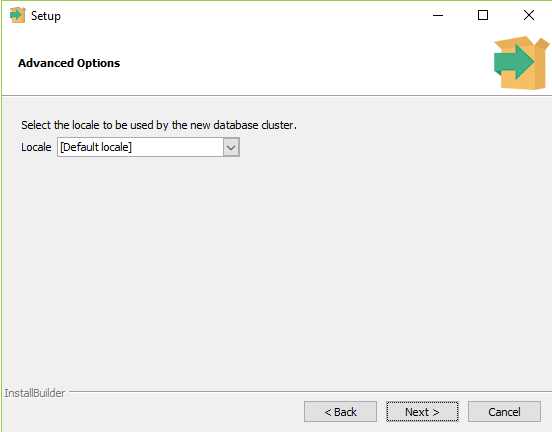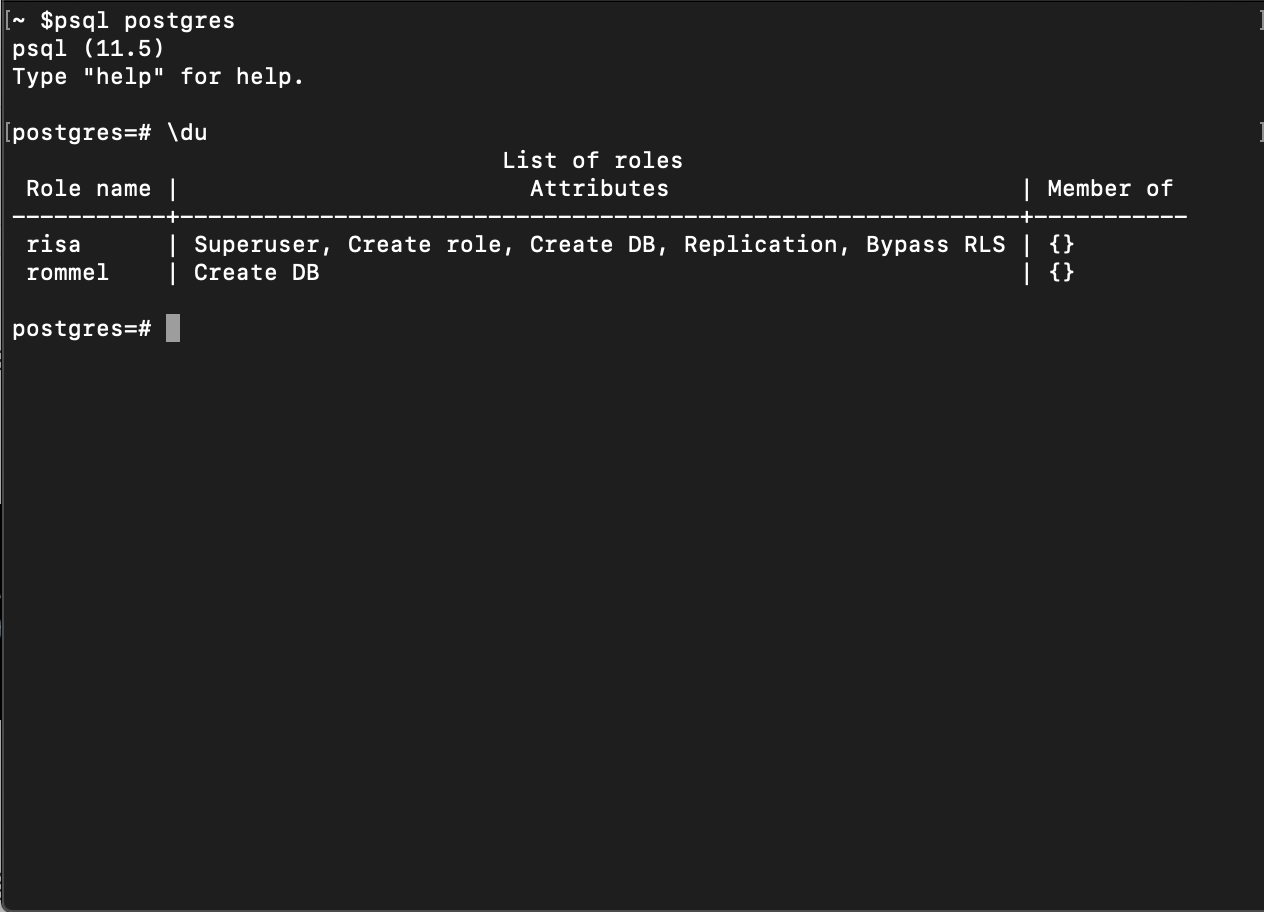
- POSTGRES CREATE SUPERUSER HOW TO
- POSTGRES CREATE SUPERUSER UPDATE
- POSTGRES CREATE SUPERUSER PASSWORD
PostgreSQL's authentication system has a number of different components, each of which are tied to roles. In PostgreSQL, this identity is represented by roles. Any policy that does not apply universally requires a notion of identity to define who to restrict and who to allow. Roles are the anchor point within PostgreSQL that determine who authentication and authorization policies apply to. A role can correspond to an individual person in the real world, or it can operate as a group with certain access that other roles can become members of. Instead of having distinct concepts of "users" and "groups", PostgreSQL uses roles to represent both of these ideas. In PostgreSQL, a role is a grouping of a specific set of capabilities, permissions, and "owned" entities.
POSTGRES CREATE SUPERUSER HOW TO
To learn how to change role privileges on specific database objects, check out our guide on role grants. For a more broad overview of how roles fit into the larger picture, take a look at the introduction to authentication and authorization guide. More specifically, this guide will cover role management as it relates to role attributes. This guide will cover what roles are and how to manage them within a PostgreSQL database cluster. They are the persona that user's adopt within the database system, are the entity by which the authentication system accepts or denies connections, and the subject of privilege management rules of all scopes. PostgreSQL roles are a combination of the ideas of users and groups into a single, flexible entity. Core among these is the concept of roles. PostgreSQL uses various mechanisms to implement authentication, authorization, and object ownership within database clusters.

POSTGRES CREATE SUPERUSER UPDATE
How to update existing data with SQLite.How to perform basic queries with `SELECT` with SQLite.Inserting and deleting data with SQLite.Creating and deleting databases and tables with SQLite.An introduction to MySQL column and table constraints.



POSTGRES CREATE SUPERUSER PASSWORD
Create user from the start with CREATEROLE and CREATEDB permissionsĪfter you've logged in to the PG server with the command line client, with a user that has the appropriate rights to create users (like the postgres user, which by default on UNIXes can be impersonated easily by the system super user with $ sudo -u postgres psql postgres): CREATE ROLE user_name PASSWORD 'tYPe_YoUr_PaSSwOrD' NOSUPERUSER CREATEDB CREATEROLE INHERIT LOGIN


 0 kommentar(er)
0 kommentar(er)
